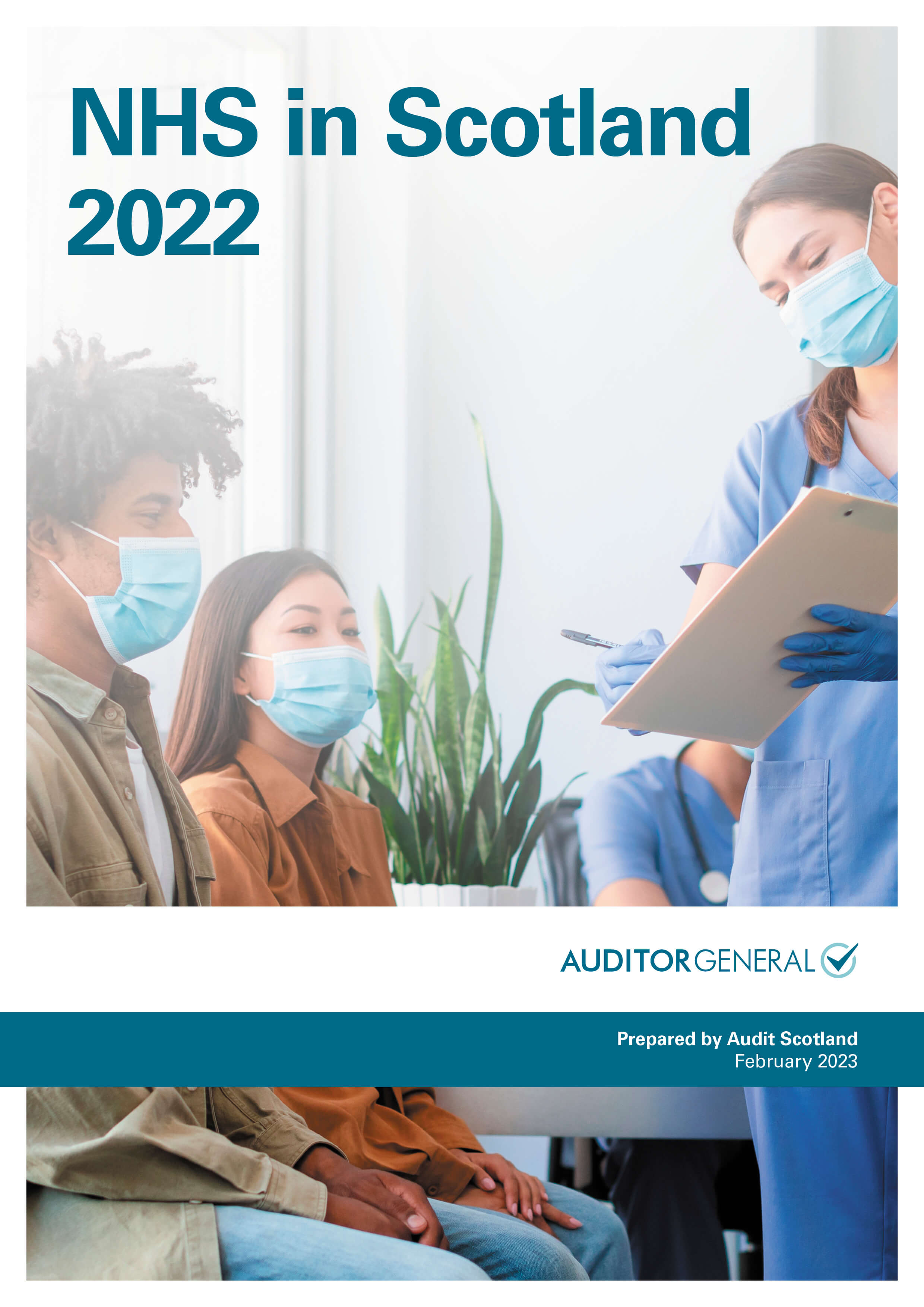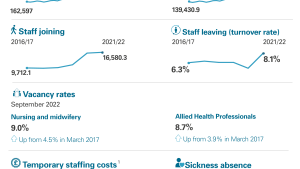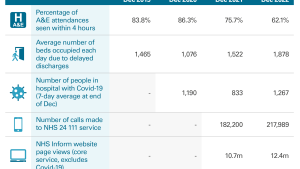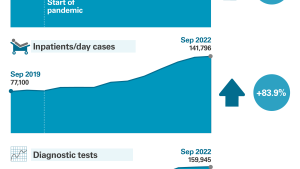Publication: NHS in Scotland 2022
Full transparency on NHS recovery needed
The Scottish Government needs to be clearer about how long it will take the NHS to recover from the Covid-19 pandemic and to reform services.
The government's NHS recovery plan aims to reduce the healthcare backlog and change how services are delivered.
But the plan doesn't contain the detailed actions that would allow progress to be accurately measured. It also lacks robust modelling to understand demand on services and the NHS's capacity to meet that demand.
The healthcare system remains under extreme pressure

Graphic showing increased pressure in the healthcare system at the end of 2022. A&E waiting times and delayed discharges have increased, and Covid-19 has not gone away.
| Dec 2019 | Dec 2020 | Dec 2021 | Dec 2022 | |
|---|---|---|---|---|
| Percentage of A&E attendances seen within 4 hours | 83.8% | 86.3% | 75.7% | 62.1% |
| Average number of beds occupied each day due to delayed discharges | 1,465 | 1,076 | 1,522 | 1,878 |
| Number of people in hospital with Covid-19 (7-day average at end of Dec) | - | 1,190 | 833 | 1,267 |
| Number of calls made to NHS 24 111 service | - | - | 182,200 | 217,989 |
| NHS Inform website page views (core service, excludes Covid-19) | - | - | 10.7m | 12.4m |
The backlog of care that built up during the pandemic is growing
More people are being added to waiting lists than are being removed from them. They are also waiting longer for treatment, including those suspected of having cancer.
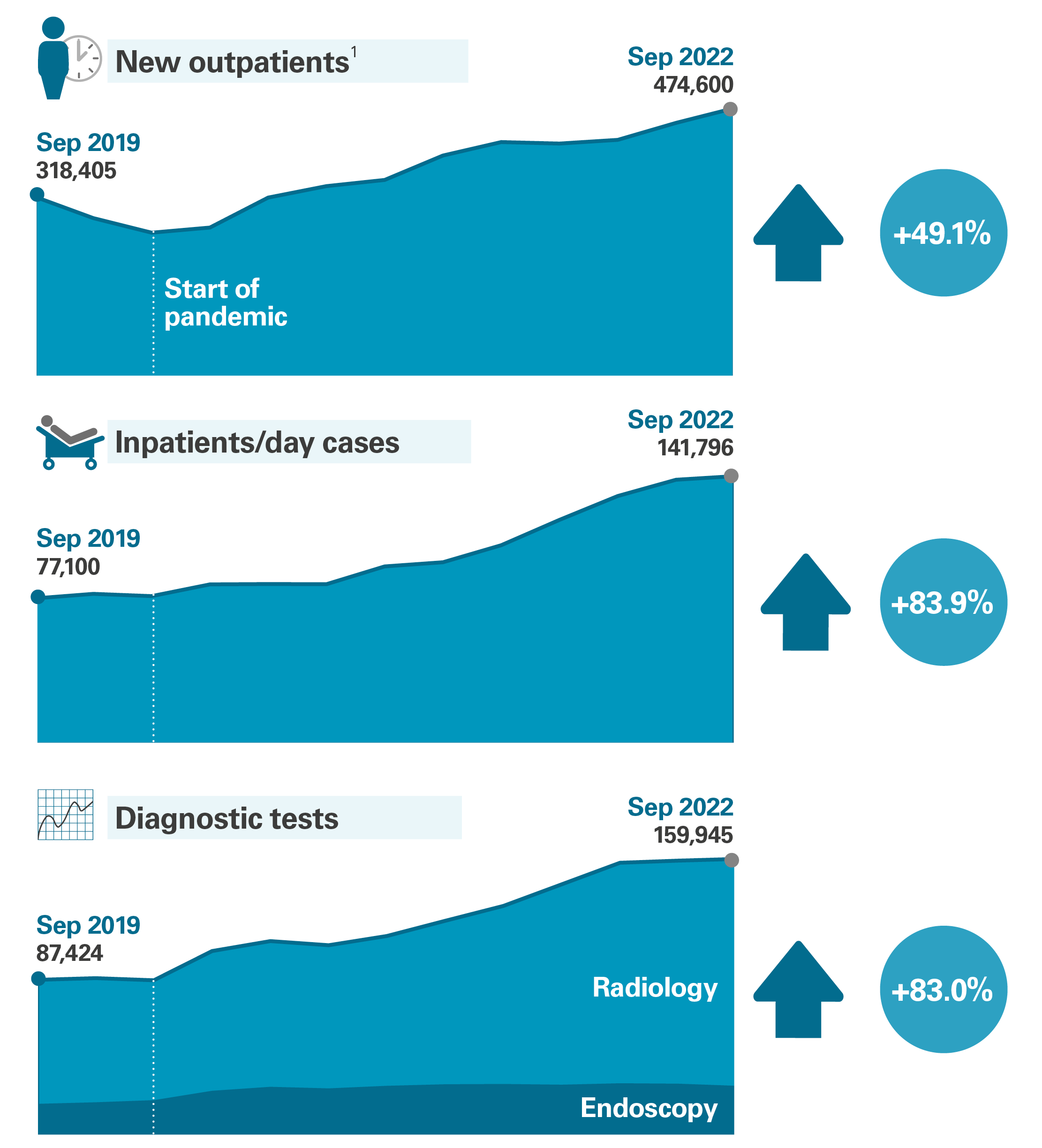
Three area charts showing the growth in planned care waiting lists in NHS Scotland, between September 2019 and September 2022 (new outpatient, inpatient / day case and diagnostic tests).
Inpatient: a patient who lives in hospital while getting treatment
Outpatient: a patient who attends hospital for treatment without staying overnight
Note: Before October 2019, some patients waiting for a key diagnostic test were included in the new outpatient waiting list. From 1 October 2019, people waiting for these tests were no longer covered by this standard. This largely explains the pre-pandemic decrease in the outpatient waiting list towards the end of 2019.
Workforce capacity is the biggest risk to NHS recovery
Health boards continue to find it hard to recruit the doctors, nurses and other health professionals needed to make sure NHS services are sustainable in the long term.
There's been a 17 per cent rise in people who can't leave hospital because often the social care they need is not available.
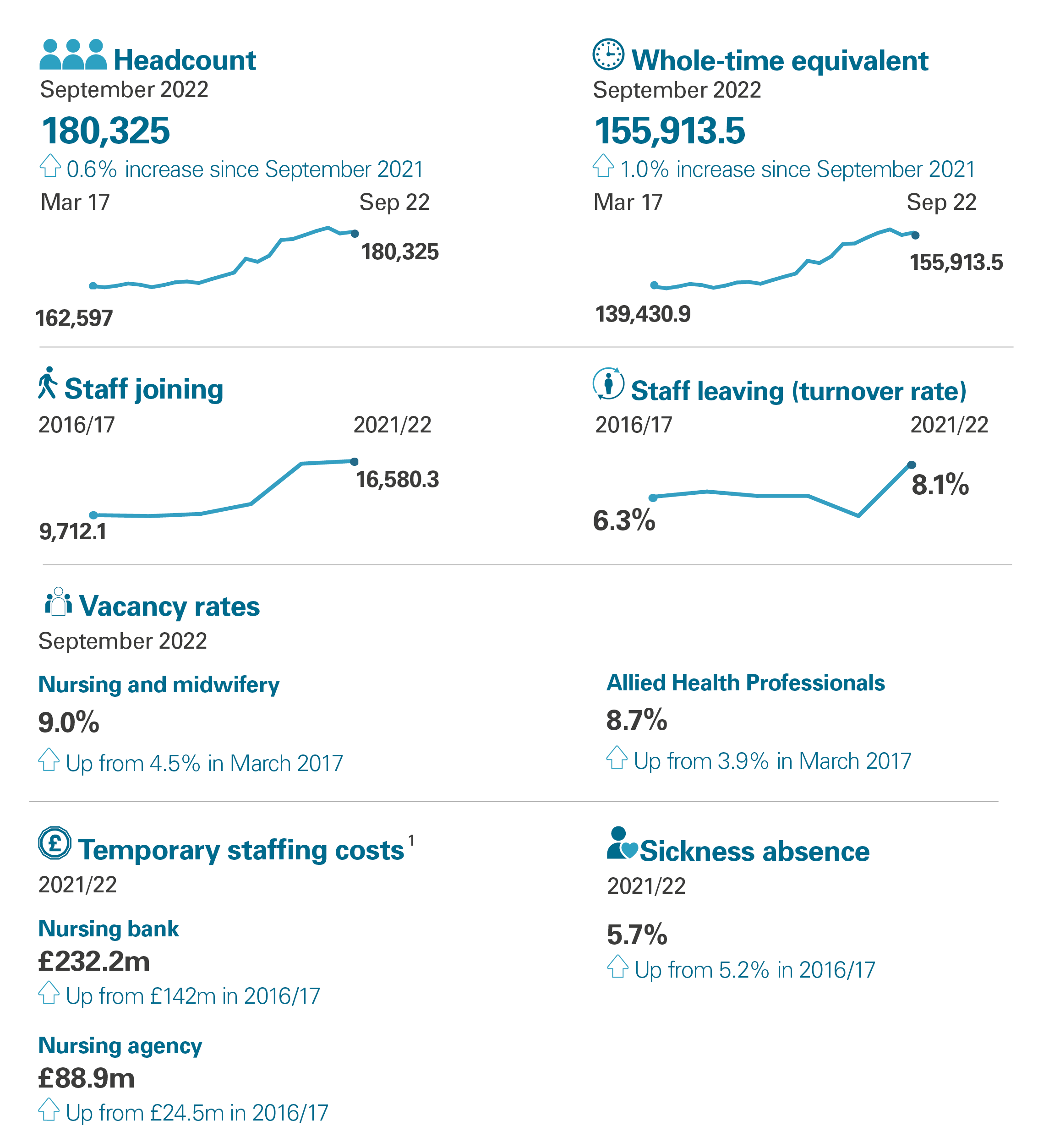
Panel of charts showing key NHS Scotland workforce statistics between 2016/17 and 2021/22. Employment has risen, but staff turnover is higher. There are high levels of vacancies nursing and midwifery and allied health professional roles. Nursing bank and agency costs have increased. Sickness absence has increased.
Note: 1. Nursing agency and bank staff expenditure figures do not take into account inflation.
Clearer information could be given on wait times
The Scottish Government, Public Health Scotland and NHS 24 launched an online waiting times platform for the public in 2022. It shows the median waiting time experienced by patients. But health boards told us that, taken in isolation, this information is not an accurate indication of waiting times.
It's too early to say if innovation is helping recovery
The Scottish Government is moving ahead with the innovation and reform essential to NHS sustainability. There are early signs of progress, but it is too soon to gauge the impact of this work.
New National Treatment Centres have been delayed
Ten new NTCs are planned and are expected to deliver 73 per cent of increases in NHS procedures, such as for hip replacements, by 2025. The first three were due to open in 2022 but have been delayed. And timescales for the remaining NTCs are unclear.
Key recruitment targets are unlikely to be met
Some recruitment targets in the NHS recovery plan have been achieved but other key targets are at risk or have been missed.
- 800 new mental health workers in A&E Target achieved
- Increasing GP workforce by 800 by 2027 Not on track
- 1000 new mental health staff in primary care At risk
Financial challenges could limit investment
Every NHS board is facing significant financial challenges. These include:
- inflation
- recurring pay pressures
- ongoing Covid-19 related costs (no longer funded by the UK Gov)
- rising energy costs
- and a growing capital maintenance backlog.
All these factors could limit investment in recovery.
 Key figures
Key figures
the Scottish Government health budget in 2022/23
has been committed to NHS recovery
the Covid-19 funding in 2022/23 no longer covered by the UK Government
rise in cost of bank and agency nursing staff since 2017
rise in delayed discharge (October 2021 to October 2022)
fewer operations scheduled in 2022 than 2019
The Scottish Government has set out the big challenges facing the NHS.
But ministers have to prioritise which NHS aims can realistically be delivered and be more transparent about the progress they're making.
The government also needs to clearly explain to the public what level of service they can expect, including waiting times.
Stephen Boyle Auditor General for Scotland
- File type:
- File size:
- 3.11 MB
- File type:
- - rtf
- File size:
- 96.16 KB
- File type:
- File size:
- 94.23 KB
- File type:
- - rtf
- File size:
- 113.76 KB
